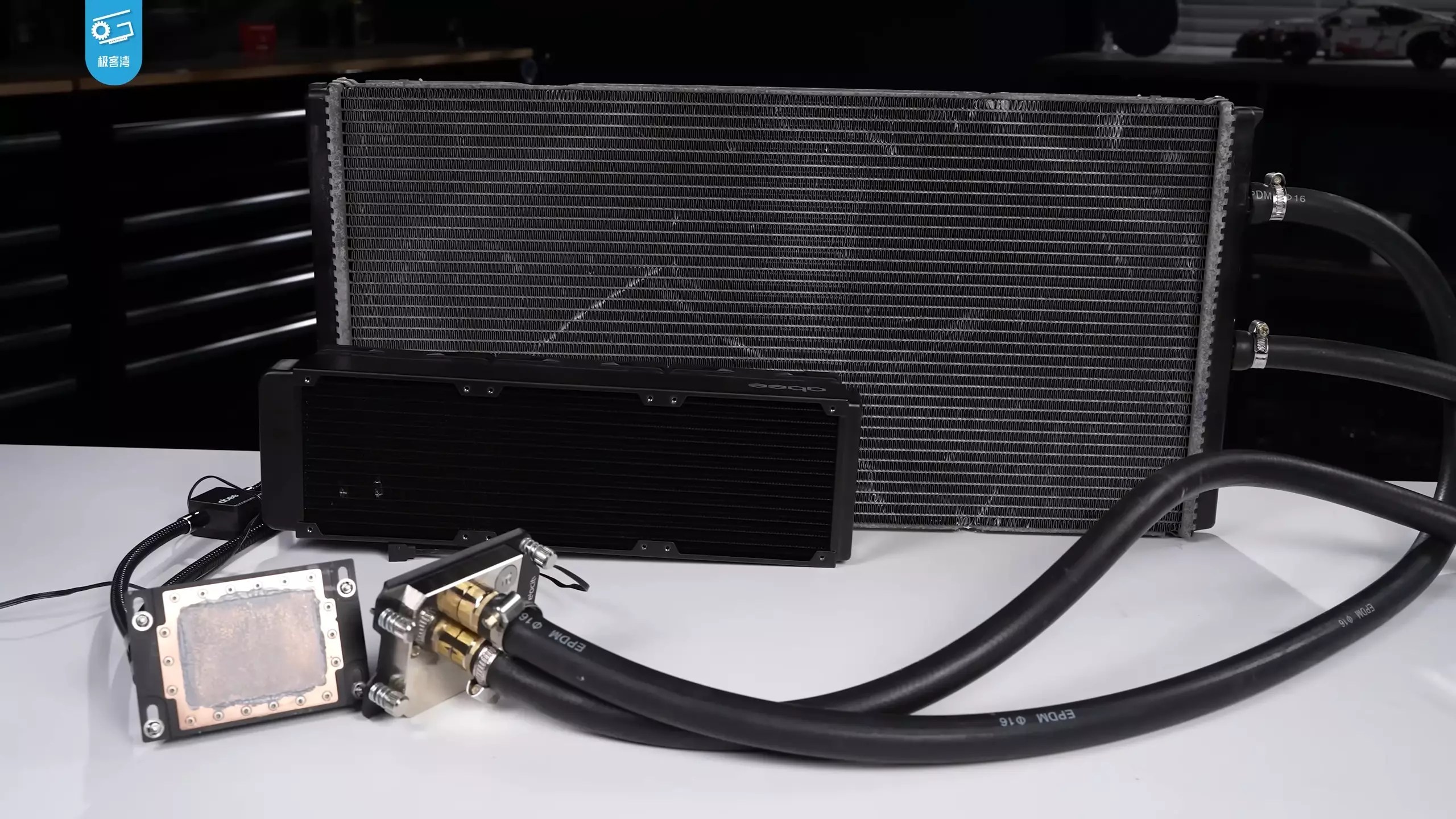Pushing the limits of modern processors requires innovative cooling solutions, but sometimes, the quest for better thermal management leads enthusiasts down uncharted, risky waters. The recent experiment involving a car radiator—specifically from a BMW M4—being repurposed as a CPU cooler exemplifies this daring spirit. While traditional cooling methods like liquid nitrogen and advanced custom loops dominate high-end overclocking, this bold project underscores the extent to which some enthusiasts are willing to go to extract maximum performance. It boldly challenges the assumption that cooling solutions must be designed specifically for CPUs, hinting at the creative, sometimes reckless, experimentation that fuels technological curiosity.
What makes this endeavor truly remarkable is not the mere attempt to use a car radiator but the audacity to adapt machinery built for automobiles to cool a 96-core processor pulling upwards of 1000 W. Typically, car radiators are optimized to cool engine coolant flowing at high volumes, with large surface areas and substantial flow rates. Their components, fans, and water pumps are engineered for automotive needs—not delicate PC hardware. Yet, by integrating parts from a BMW M4, some Toyota Highlander fans, and a water block designed for CPUs, the team managed to sustain a stable overclocking run, hitting near 4.9 GHz on all 96 cores—an extraordinary feat in itself.
The Mechanics and Limitations of Cross-Industry Cooling Innovation
The experimental setup faced numerous hurdles, shedding light on the real-world constraints strikingly absent in theoretical engineering. The car radiator, inherently larger and less optimized for rapid heat transfer compared to dedicated PC coolers, struggled to keep up with the heat generated by this behemoth CPU. A notable consequence of this mismatch was the underutilization of the radiator’s full thermal capacity. The setup also lacked the typical high-efficiency PC fans; instead, the team employed massive twin fans borrowed from a seafood market—an inventive, if unorthodox, solution.
This choice of fans exemplifies a broader issue: the misalignment of physical design paradigms between automotive and computing cooling systems. Car fans are designed for enormous volume airflow over sizeable radiators, far more than what typical PC fans can provide. While they moved impressive amounts of air, their power draw—around 100 W—highlighted the inefficiency of such an approach. Nevertheless, their ability to sustain the cooling margin required for a stable 4.9 GHz overclock on all cores demonstrated resilience even amidst significant limitations.
It’s crucial to acknowledge that attempting this kind of cross-industry tech mashup is inherently impractical for everyday use. The power consumption, complexity, and potential for hardware damage make such setups unsuitable beyond experimental or entertainment purposes. Yet, this experiment underscores a valuable lesson: innovation often involves trial, error, and boundary-pushing beyond conventional wisdom.
Implications for Enthusiasts and the Future of Overclocking
Despite its impracticality, the project ignites a broader conversation about the limits of cooling technology and the lengths hardware enthusiasts will go to unlock extraordinary performance. It exemplifies a mindset rooted in curiosity and defiance of tradition—an attitude that drives genuine innovation, even if only as a thought experiment. For most users, conventional cooling solutions remain the smart choice; however, the willingness to tinker with automotive components reveals a desire to challenge assumptions and explore new frontiers.
This kind of experimentation also forces engineers and designers to revisit core principles: what makes a cooling system effective, what trade-offs are involved, and how far can improvisation be pushed in pursuit of performance. It calls into question whether future high-performance systems might benefit from more radical cross-industry collaborations—perhaps, in the distant future, hybrid cooling systems that blur the lines between automotive and computer engineering.
But as with all innovations that involve significant risks, the takeaway remains clear: while it can be compelling to explore unconventional methods, they are rarely practical or safe outside of controlled experiments. For the average user, investing in a well-designed custom loop or high-end air cooling remains the prudent choice. Nonetheless, these audacious projects ignite our collective imagination, showcasing the endless human desire to push past perceived limits and redefine what is possible.


Leave a Reply